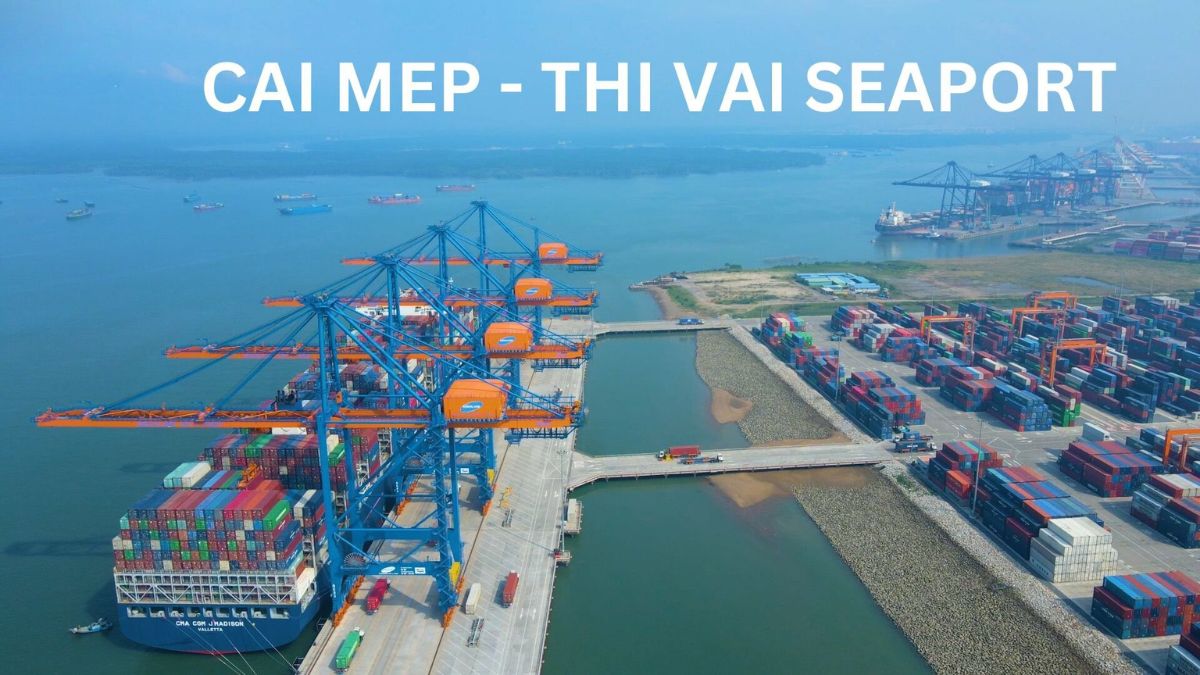How the Cai Mep Port Expansion Impacts Global Trade

Introduction
Cai Mep Port, located in the southern province of Ba Ria–Vung Tau, is rapidly emerging as one of Southeast Asia’s most vital deep-water ports. As Vietnam strengthens its role in global manufacturing and trade, the ongoing Cai Mep port expansion is poised to become a game-changer for regional logistics, container throughput, and global supply chain efficiency. This blog explores the scope of the expansion, how it boosts Vietnam’s trade competitiveness, and what it means for importers, exporters, and shipping lines worldwide.
Overview of Cai Mep Port
Cai Mep–Thi Vai is part of Vietnam’s southern key economic zone, situated approximately 80 kilometers from Ho Chi Minh City. Unlike many other Vietnamese ports, Cai Mep has a deep draft (up to 16.5 meters), enabling it to accommodate ultra-large container vessels (ULCVs) of up to 200,000 DWT.
Key features of the port:
-
Serves as one of the few Southeast Asian ports with direct services to North America and Europe.
-
Reduces Vietnam’s dependence on transshipment hubs like Singapore or Hong Kong.
-
Handles around 2.2 million TEUs per year, with ongoing plans to expand capacity.
What’s Driving the Expansion?
1. Rising Trade Volume
Vietnam’s booming export economy—especially in electronics, textiles, and machinery—has significantly increased port traffic. As the country continues to attract foreign direct investment (FDI) and manufacturing relocations from China, there’s mounting pressure on logistics infrastructure.
-
According to the General Statistics Office of Vietnam, total export turnover in 2024 exceeded $370 billion, necessitating robust port support.
2. Global Shipping Realignment
The shipping industry is shifting toward fewer transshipments and more direct port calls. Cai Mep’s deepwater advantage allows it to host ULCVs, making it a preferred choice for direct shipping routes.
3. Government Investment and PPP Models
Vietnam’s Ministry of Transport and the Ba Ria–Vung Tau government are working with public-private partnerships (PPPs) to enhance port infrastructure. More than $2 billion USD is being funneled into dredging channels, expanding berths, and enhancing container yards.
Expansion Plans and Upgrades
Some of the major elements of the Cai Mep expansion include:
-
New Terminal Developments: In 2023, Gemalink Phase 2 commenced to double container handling capacity to 3 million TEUs/year.
(Source: Gemadept) -
Improved Road and Rail Access: The government is upgrading National Highway 51, building new expressways (e.g., Bien Hoa–Vung Tau Expressway), and considering rail connectivity for better hinterland access.
-
Digital Infrastructure: Implementation of smart port technologies, automated gate systems, and real-time cargo tracking for better efficiency.
-
Green Port Initiatives: The expansion also incorporates environmentally friendly operations such as electrified cranes and shore power to reduce carbon emissions.
Impacts on Global Trade
1. Direct Shipping Reduces Lead Times
The biggest advantage of Cai Mep’s expansion is reduced dependency on transshipment. Exporters and importers can save 3–5 days in shipping time when using direct routes to the U.S. and Europe. This boosts Vietnam’s competitiveness in time-sensitive sectors like electronics and apparel.
2. Lower Logistics Costs
With direct access to global routes and improved inland connectivity, businesses benefit from lower freight and handling costs. This is particularly beneficial for SMEs looking to scale exports without complex logistics operations.
3. Enhanced Reliability in Supply Chains
The COVID-19 pandemic and Suez Canal disruptions highlighted the fragility of global supply chains. By expanding its own deepwater capacity, Vietnam reduces reliance on foreign transshipment ports and provides more stable shipping schedules, especially during peak seasons.
4. Strategic Competition with Regional Hubs
Cai Mep is positioning itself as a strategic rival to established ports like Singapore, Laem Chabang (Thailand), and Port Klang (Malaysia). With its upgraded facilities and increasing international services, it is becoming a cost-effective alternative for cargo flows into Asia-Pacific.
Who Benefits from the Expansion?
Exporters in Vietnam
-
Faster turnaround times.
-
Lower congestion compared to Cat Lai Port in HCMC.
-
Greater container availability and scheduling flexibility.
Multinational Corporations
-
Ideal for regional distribution centers.
-
Streamlined operations for electronics, garments, and furniture exports.
Shipping Lines
-
Ability to dock larger vessels and optimize capacity.
-
Better turnaround times due to smart port management.
Freight Forwarders and Agents
-
New business opportunities to offer direct routing and premium services.
-
Cost savings from reduced inland transit distances.
Challenges to Watch
Despite its many advantages, the expansion also faces some challenges:
-
Inland Connectivity Bottlenecks: While maritime infrastructure is improving, poor last-mile road infrastructure can create delivery delays.
-
Regulatory Hurdles: Fragmented customs processes and limited digital adoption in public administration still affect port efficiency.
-
Environmental Impact: Increased shipping volumes raise environmental concerns, although the adoption of green technologies is helping mitigate these.
The Future Outlook
With ongoing development, Cai Mep Port is forecasted to handle 10 million TEUs annually by 2030. It is also slated to become a regional transshipment hub, not just a Vietnamese gateway. Plans to establish bonded logistics zones and adjacent free trade zones (FTZs) will only enhance its strategic value.
As Vietnam deepens its integration with trade blocs like the CPTPP and RCEP, ports like Cai Mep will serve as vital links in connecting Vietnam to major economies across Asia-Pacific, North America, and Europe.
Conclusion
The Cai Mep Port expansion marks a significant milestone in Vietnam’s logistics and global trade capabilities. For businesses looking to import, export, or establish regional operations in Southeast Asia, understanding the strategic advantages of this port is crucial. From cost savings and shipping speed to reduced supply chain disruptions, Cai Mep is not just a port—it’s a symbol of Vietnam’s ascent in the global logistics arena vietnam-agent.com .